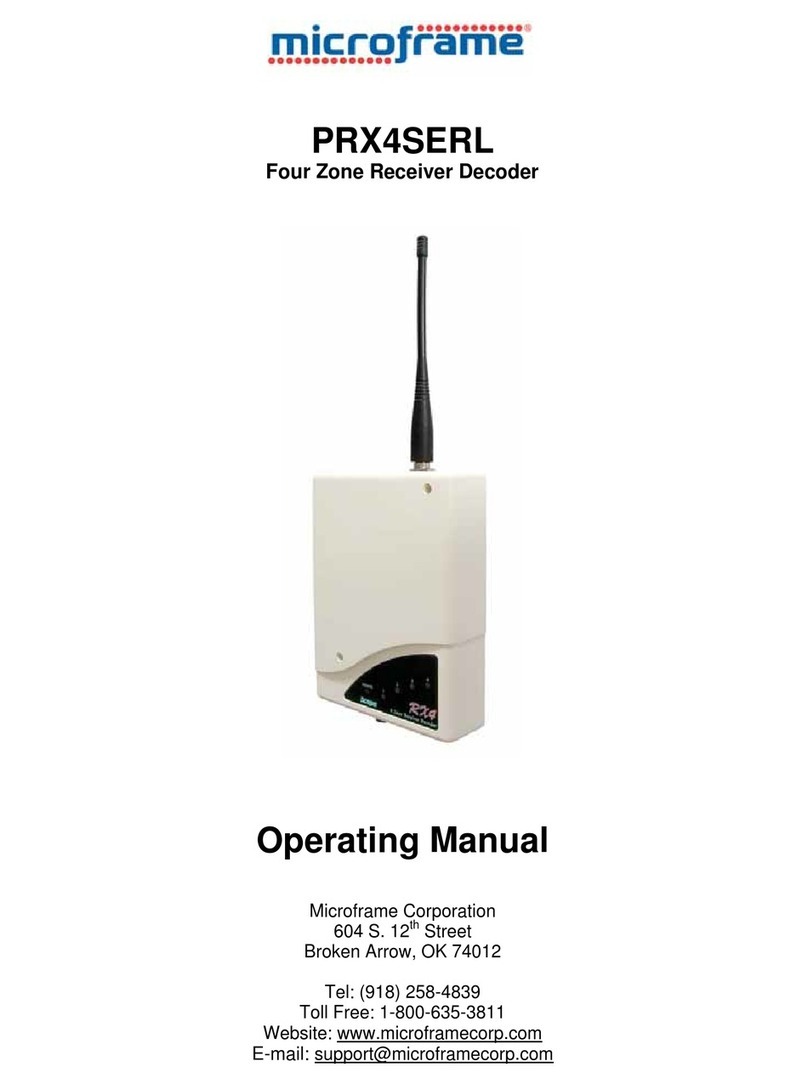
2 of 2
Limited Warranty Agreement
Your Microframe system is warranted against
failure due to defects in workmanship or
material for a period of one (1) year from the date
of purchase. Microframe Corporation will repair
or replace any defective unit. Obvious abuse or
mishandling of the unit is NOT covered by this
warranty.
Merchandise Return
If your unit does not work satisfactorily,
please give us a call. We may be able to solve the
problem by telephone. If it becomes necessary to
return your unit to the factory, please observe
the following:
1. Place unit in a sturdy box with sufficient
packing material.
2. If requested, include the power supply. It is
not necessary to return the cable and connectors
unless they are the problem.
3. Return the system insured and prepaid
since we are not responsible for shipping
damages and losses on returned units.
Warranty Service
For warranty service, please contact
Microframe Corporation at 1-800-635-3811.
technician will gladly assist you.
Assistance
For any product assistance or maintenance
help, contact Microframe Corporation by
telephone at 1-800-635-3811 or by e-mail at
Safety
Do not install substitute parts or perform any
modification to the product without first
contacting Microframe Corporation.
Warning
ll power transformers, line cords, and
electrical equipment should be kept out of the
reach of children and away from water. (If you
are installing cable in an air plenum area, such
as a drop ceiling used for air return, you must
use plenum-rated cable. The cable supplied from
Microframe is rated CL2 and is approved for
installation everywhere indoors except plenum
areas.)
Life Support Policy
Microframe's products are not
authorized for use as components in life
support devices or systems without the
express written approval of the president
of Microframe Corporation. As used herein:
1. Life support devices or systems are defined
as systems which support or sustain life, and
whose failure to perform when properly used in
accordance with instructions for use provided in
the labeling, can be reasonably expected to result
in a significant injury to the user or any one
depending on the system.
2. A critical component is any component of a
life support device or system whose failure to
perform can be reasonably expected to cause the
failure of the life support device or system, or to
affect its safety or effectiveness.
Disclaimer
We are constantly striving to improve our
products. Due to this, specifications are subject
to change without notice.
Microframe Corporation
604 S. 12th Street
Broken Arrow, OK 74012
1-800-635-3811




























